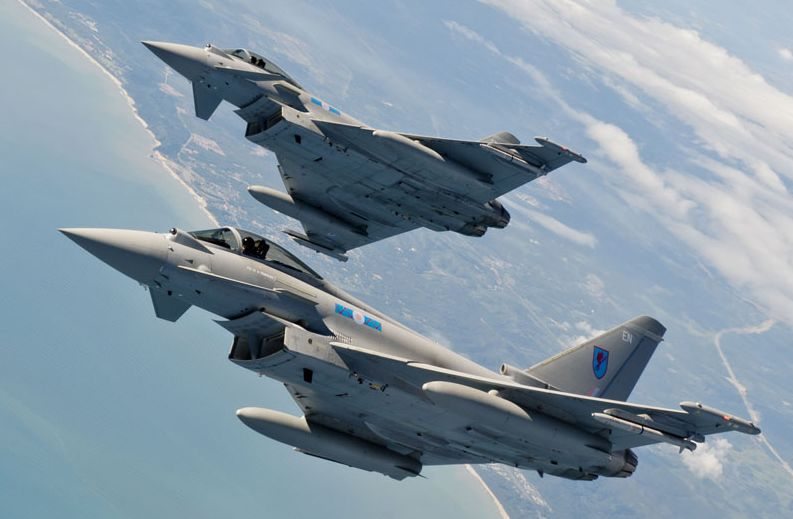For the thousands of passengers who fly directly across the Atlantic on a daily basis, intercontinental air travel is routine and straightforward. In contrast, flying a squadron of RAF Typhoon FGR4 multi-role fighters from the UK to the USA is a complex process entailing careful planning, coordination and flexibility.
This week 1(Fighter) Squadron from RAF Lossiemouth are headed for Nellis Air Force Base in the western United States to participate in Red Flag, the largest and most complex air warfighting exercise in the world.
Known as a ‘trail’, during the course of the 6000 mile journey each Typhoon will take on fuel in mid-air from a Voyager aircraft on 13 occasions in a carefully coordinated plan prepared by the Air-Air Refuelling Cell (AARC).
Based at RAF Brize Norton the AARC comprises a small cadre of highly experienced personnel a spokesperson for who explained the planning process.
“We start planning the trail four weeks in advance and whilst we’ve been conducting trails for many years each one is different. When we get tasked we plan the route and determine where each air-air refuelling will take place. This then gives us the information we require to obtain diplomatic clearances and to book airspace, not only to deconflict with other air traffic but also to enable the Voyager and Typhoon formation to climb or descend in the event of poor weather.”
During the winter months trails follow the southern route, weaving across the Atlantic as the spokesperson explained:
“When trailing fast jets over long distances we need to remain within 90 minutes of a diversion airfield lest we have any problem with one of the aircraft. We also have to factor in the sea temperature to ensure that in the unlikely event of a pilot having to eject that they are able to survive in the water for as long as possible.
“This means we are unable to fly directly across the Atlantic in one go and instead stage through the Azores, Bermuda and the east coast of the USA.”
Since entering service the Voyagers of 10 and 101 Squadrons have trailed RAF fast jets long distance on a number of occasions in addition to supporting overseas operations and Quick Reaction Alert in the UK and Falkland Islands.
The Voyager is more efficient than the tankers it replaced in service, burning 25 per cent less fuel per hour than the Tristar and carrying more fuel than the VC10, giving great versatility and flexibility. Although the Voyager squadrons are not participating in Red Flag, the trail of Typhoons replicates their role in the support of contingency operations worldwide.










